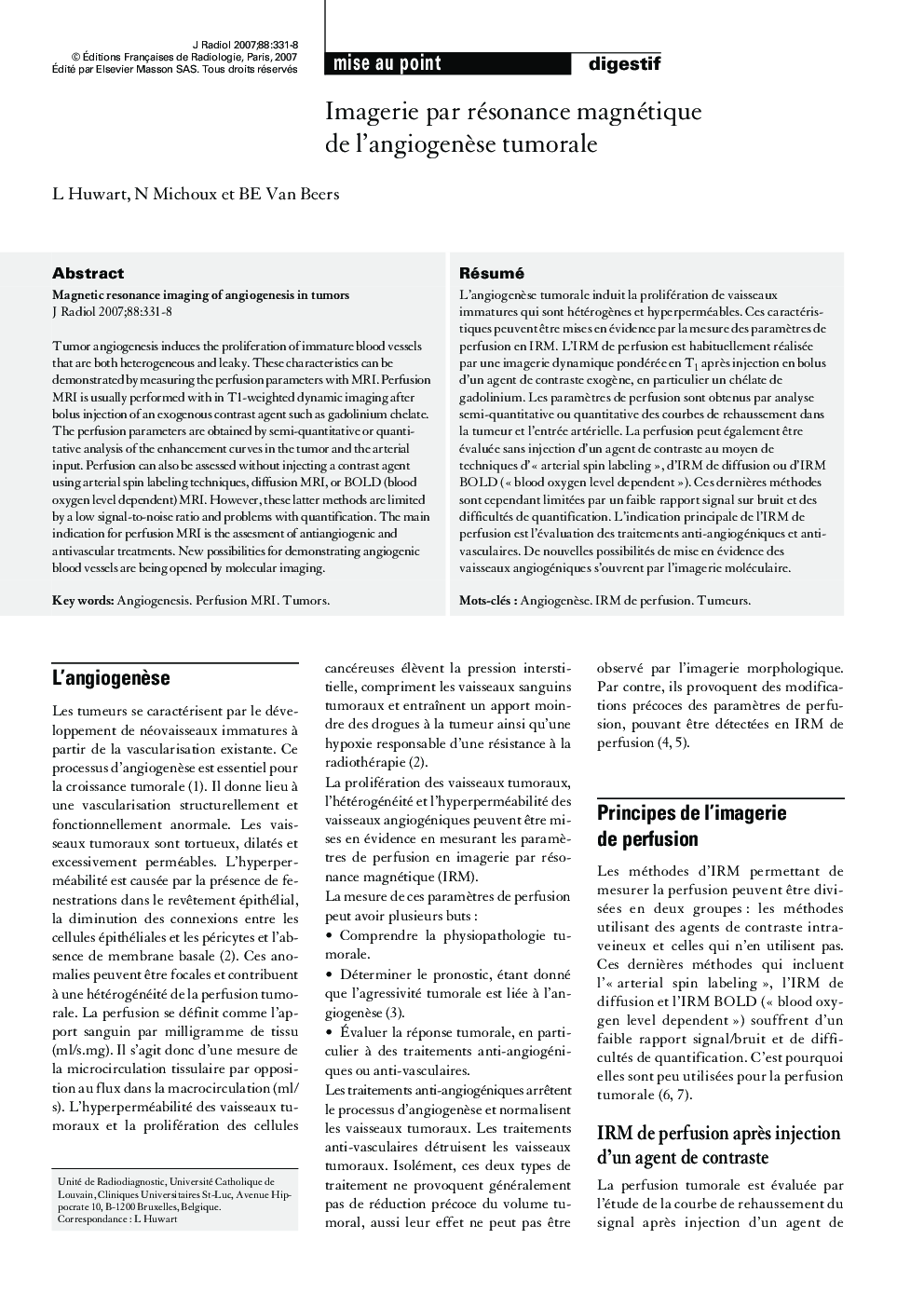| Article ID | Journal | Published Year | Pages | File Type |
|---|---|---|---|---|
| 4236237 | Journal de Radiologie | 2007 | 8 Pages |
Abstract
Tumor angiogenesis induces the proliferation of immature blood vessels that are both heterogeneous and leaky. These characteristics can be demonstrated by measuring the perfusion parameters with MRI. Perfusion MRI is usually performed with in T1-weighted dynamic imaging after bolus injection of an exogenous contrast agent such as gadolinium chelate. The perfusion parameters are obtained by semi-quantitative or quantitative analysis of the enhancement curves in the tumor and the arterial input. Perfusion can also be assessed without injecting a contrast agent using arterial spin labeling techniques, diffusion MRI, or BOLD (blood oxygen level dependent) MRI. However, these latter methods are limited by a low signal-to-noise ratio and problems with quantification. The main indication for perfusion MRI is the assesment of antiangiogenic and antivascular treatments. New possibilities for demonstrating angiogenic blood vessels are being opened by molecular imaging.
Related Topics
Health Sciences
Medicine and Dentistry
Radiology and Imaging
Authors
L. Huwart, N. Michoux, B.E. Van Beers,
